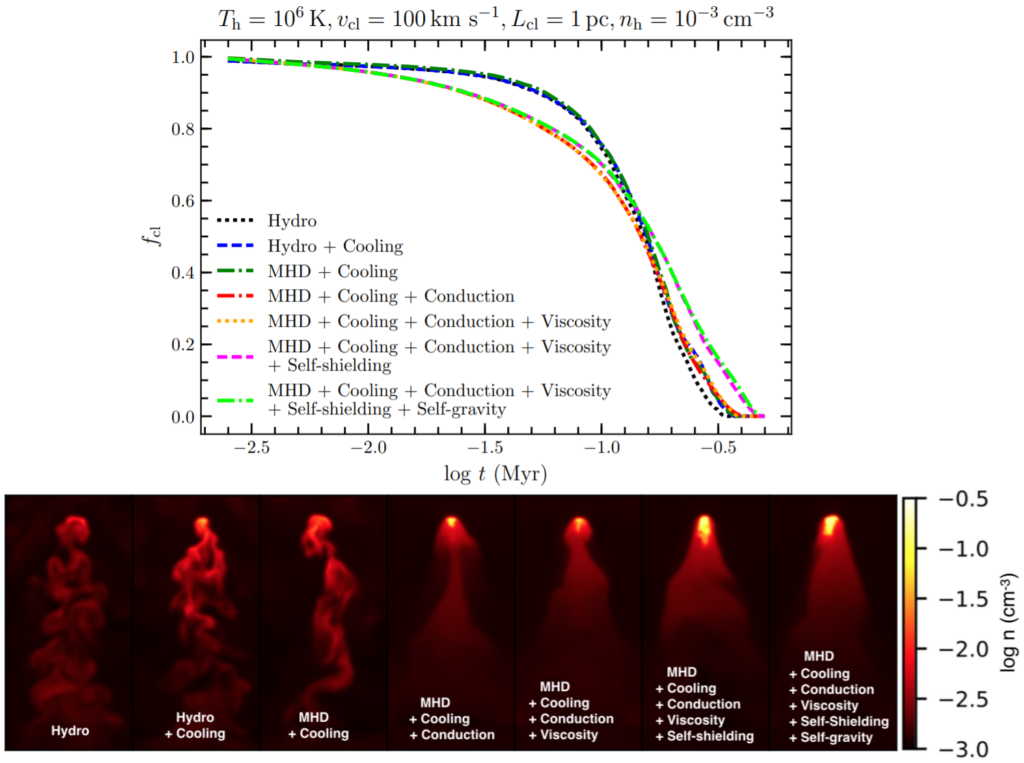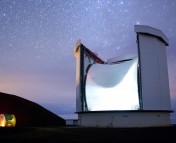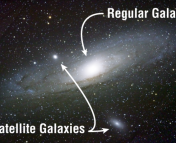Title: On the Survival of Cool Clouds in the Circum-Galactic Medium
Authors: Zhihui Li , Philip F. Hopkins, Jonathan Squire, Cameron Hummels
First author’s institution: TAPIR, California Institute of Technology
Status: Accepted to MNRAS, open access on arXiv
The circumgalactic medium (CGM) lies outside the bright region of a galaxy and is conventionally considered to end at the virial radius. Although there are many ideas about what is happening inside of the CGM, it is not particularly well understood, and is hard to simulate to boot.
However, understanding the CGM is critical to the study of how gas cycles in and out of galaxies and by extension galaxy evolution. In addition to being a dynamic environment, the CGM is also believed to contain cool dense clouds of largely neutral gas flowing through a hotter medium, leading to a complicated “multiphase” structure. This is the generally accepted picture, but there are implications for the cool clouds. How long can these cool clouds survive being bombarded by hotter gas flowing around them, and potentially an entire host of other physical effects?
Which physical effects are important for cloud survival in the CGM?
The survival of cool clouds, or the cloud crushing problem, has historically been a topic of interest in studies of the interstellar medium (ISM) because of the potential implications for star formation. However, the conditions in the CGM are quite different from those in the ISM, so astronomers need to start from scratch. Using numerical simulations of cool clouds moving through an ambient medium, the authors of today’s paper explored a range of physical conditions to examine how critical they are in determining cloud survival times. The examined variables include initial cloud sizes and velocities, and the temperature and density in the external environment. Many physical effects were incorporated in the simulations, in particular heat conduction, viscosity, magnetic fields, self-shielding (when material is so dense that it blocks external radiation), and self-gravity.
A regime of immediate cloud destruction…
There are a few scenarios where the clouds will be destroyed quite quickly, the first of which is for clouds whose radii are smaller than the distance traveled by electrons generated in the hot external medium. Essentially these clouds are so small that the electrons shoot through them without the slightest hindrance, and the ensuing heat conduction causes the cool cloud to evaporate (see the yellow region in Figure 1).
On the other end of the spectrum, large clouds are also inclined to be destroyed rather quickly due to gravitational instabilities. To be stable, there must be a balance between the self-gravity of a large cloud and its internal pressure, and a combination of molecular and metal-line cooling along with strong self-gravity causes big clouds to fragment and collapse (see the orange region in Figure 1). Interestingly, self-gravity is not important at all for clouds below the Jeans mass limit (above which structures naturally collapse) even those that are quite close to it.

…and one of immediate growth
For a certain range of column densities (or the number of particles per unit area) and temperatures, a cloud can grow substantially by accumulating material that cools along a shock front at the head of the cloud (lavender region in Figure 1). One tested scenario also creates a situation somewhere between cloud destruction and enhancement: when the hot external medium is roughly 106 K, then it reaches a sweet spot where gas cools quickly, and this external material becomes unstable. At this point, the cool cloud is no longer confined by the pressure of the external gas and it can expand however it likes, simultaneously gaining mass from the rapidly cooling external medium (red region in Figure 1). Although the cloud changes drastically in shape and structure, this isn’t necessarily destruction or growth of the cloud, by the definitions used by the authors.
The Cloud Crushing Problem
The white region in Figure 1 shows where clouds are subject to the cloud “crushing” problem. In this regime, clouds will be destroyed on longer timescales than those described above, but their lifetimes are affected by several physical variables. Previous “classical” studies of this problem in an ISM context have shown that the lifetime of a cloud follows a relatively simple equation, tcc=(ncl/nh)1/2 Rcl/vcl, where ncl and nh are the densities of the cloud and the hot external medium, respectively. Rcl and vcl are the radius and velocity of the cloud.
The simulations completed in this investigation have an interesting result, because even when including many more complex physical effects than previous studies, the results are very similar to those derived in the past. The fit to the relationship found in today’s paper is tlf=10 tcc f, where f is a factor dependent on the initial radius and velocity of the cloud, and on the external gas density and temperature. Thus, the classical result only needs to be multiplied by a factor of 10 f to work, even for these complex simulations!

So how does inclusion of different physical effects in the simulations change the length of the cloud’s lifetime? Adding radiative cooling increases a cloud’s lifetime slightly, by increasing its density as the cloud shrinks and making it more shielded from outside influences (Figure 2). Conduction can decrease a cloud’s lifetime, while self-shielding increases it by a bit. Magnetic fields don’t appear to have a significant effect on cloud lifetimes, although they can inhibit conduction to some extent. This is because the influence of magnetic pressure is dependent on how it compares to thermal pressure, and thermal pressure dominates in the CGM. Including viscosity effects and self-gravity also doesn’t change cloud lifetimes much compared to these other processes.
Studies like these help astronomers narrow down which effects are the most important to consider when attempting to model and understand the CGM, and to ultimately answer questions about how the CGM affects galaxy evolution. From this work, the takeaway should be that cooling, conduction, and self-shielding are the main means by which a cool cloud will meet its maker, at least in the cloud crushing regime.




